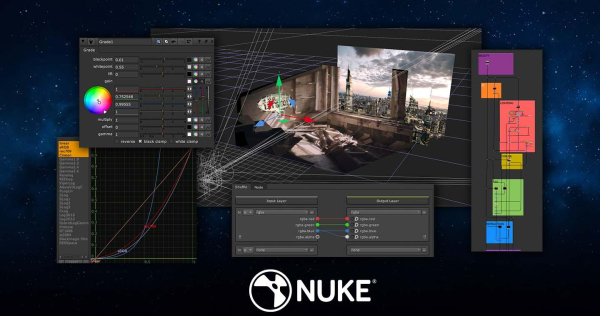Foundry has now released version 16 of its compositing classic Nuke. This now enables changes to be made to multiple shots simultaneously, faster roto work "on a grand scale" and fresh timeline tools for more effective management of imported assets.
Nuke 16.0 introduces a variable-based workflow for the first time, allowing changes to be made to multiple shots simultaneously within the same script. At its core, this should allow multiple shots, sequences and variations to be managed efficiently without duplicates by setting individual parameters globally for all clips.

Compositing Classic - Foundry Releases Nuke 16.0
Thanks to significant improvements in the feedback loop, VFX supervisors and VFX editors working in the Nuke Studio or Hiero timeline can approve and deliver shots faster than ever before. New multi-channel soft effects help supervisors test shots and thus clearly communicate the "creative intent" of the planned realization in advance. A new contact sheet enables quick and easy comparison of shots, and Quick Export is now said to work up to 12 times faster.
Improvements to the Roto node include smoother playback and motion blur. And last but not least, BlinkScript should now be easier to use. The extended BlinkScript editor now includes better debugging functions.
The following clip provides a quick overview of the new functions:
Nuke continues to run under Linux, Mac and Windows with AMD and Nvidia GPUs, and for those interested, there is a 30-day trial version, among other things. A simple license starts at 3,000 euros/year and is therefore primarily of interest to users who are well utilized with Nuke projects on a daily basis.
If you want to take a look around and familiarize yourself with the field of compositing,  Blackmagic's Fusion, among other things, offers a much cheaper entry into node-based compositing. The successor to the former open source Nuke clone Natron
Blackmagic's Fusion, among other things, offers a much cheaper entry into node-based compositing. The successor to the former open source Nuke clone Natron  now Autograph, on the other hand, has turned to a compositing workflow with layers à la After Effects.
now Autograph, on the other hand, has turned to a compositing workflow with layers à la After Effects.

